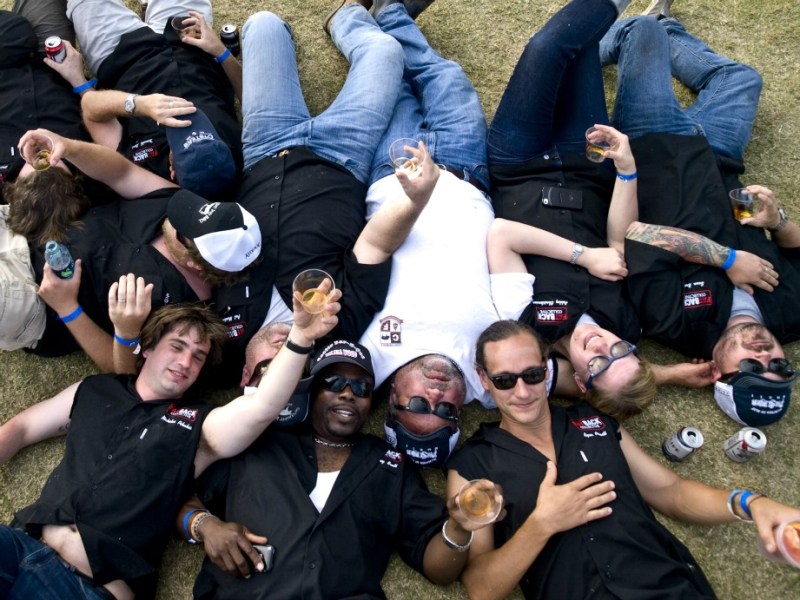
The Fatback Collective formed in 2011 when James Beard Award Winner, Donald Link, was in the process of writing his second cookbook and wanted to include a section on the Memphis in May Barbecue Cooking Contest. So, he approached his friend, Nick Pihakis (owner of one of the South’s most prestigious restaurant brands, Jim ’N Nicks), and the two decided to register together for Memphis in May—in the “Whole Hog” portion of the competition.
In researching the contest, Pihakis said, the two were surprised to find that “most people who entered altered the pork with different solutions and brines and used charcoal and not wood.” Instead, Link and Pihakis wanted to use a breed of hog that wouldn’t require any alterations and they wanted to make their own wood charcoal out of logs they burned. So, they started a series of dinners and assembled a team of chefs, pitmasters, pork experts and writers—a group of people who had met through the Southern Foodways Alliance and wanted to “do things the right way,” Pihakis explained.
The team came in third at the 2011 Memphis in May Contest proving, as Mr. Pihakis believes, “that you don’t have to alter pork to come out with a product that is tender, juicy and flavorful; you just need to use the right breed, raise the animal right and cook the meat the right way.”
However, the goal of the Fatback Collective isn’t to compete, but to learn about the best ways to raise and prepare their food and then teach and lead others by example. Pihakis recently traveled to Uruguay and admired the simplicity of the cooking techniques and the very basic, natural way the pigs were raised on the farms. The experience made Pihakis and other members of the Collective realize how frequently American chefs can complicate their dishes and preparation processes.

As a member of the Collective, Pihakis has purchased a processing plant in Alabama that he supplies only with hogs raised from a growing infrastructure of local farmers. Pihakis wants to create a trusting relationship with these farmers so they know they will always have somewhere to go with their livestock. The pork products made at the processing plant will then be shipped and sold in stores such as Whole Foods and Kroger’s and be available for the average backyard barbecuer.
By the end of the year, Pihakis hopes to have partnerships with at least ten local farmers and to be supplying pork from his processing plant to not only the Jim ’N Nicks restaurants, but to the restaurants and enterprises of the rest of the Fatback Collective members.
Pihakis may be at the cutting edge of the sustainable food industry, but he still has tips for those of us who enjoy cooking barbecue at home. “Part of the fun,” Pihakis says, “is experimenting. I like to get a good rub and use my Big Green Egg grill and cook it low and slow.”
And what about sauce? “Anything with vinegar and pepper to really bring out the flavor. Just make a simple sauce, cook your meat low and slow, grab a cold beer and kick back.”


